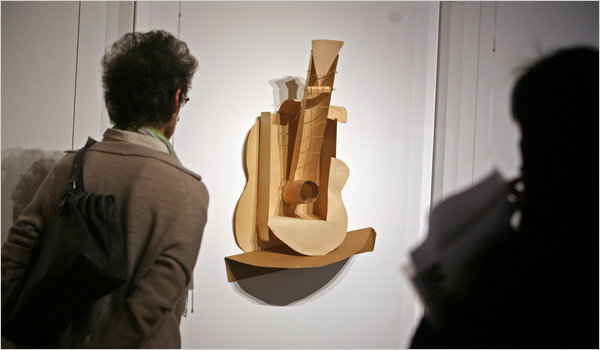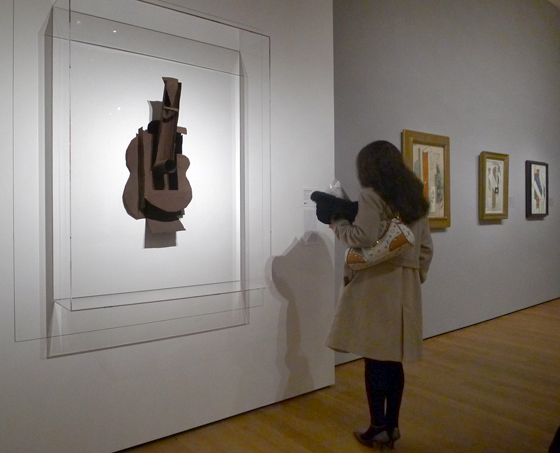Cobbled together from cardboard, paper, string, and wire, materials that he cut, folded, threaded, and glued, Picasso’s silent instrument resembled no sculpture ever seen before.

To create Guitar Picasso made a radical leap from the sculptural tradition of modeling (carving or molding) to a new technique of assemblage. He created a first version of Guitar from cardboard in 1912, then later remade the work in sheet metal; the modern ordinariness of both of these materials is very different from traditional sculptural materials such as bronze, wood, and marble. The planes of the sheet-metal construction engage in a play of substance and void in which volume is suggested, not depicted.

In a dramatic demonstration of the flexible way visual forms can be read in context, the guitar's sound hole, which normally recedes from the instrument's smooth surface, here projects outward into space.

In 1914 the artist reiterated his fragile papery construction in a more fixed and durable sheet metal form. These two Guitars, both gifts from the artist to MoMA, bracket an incandescent period of material and structural experimentation in Picasso’s work.

According to www.moma.org and www.pablopicasso.org













